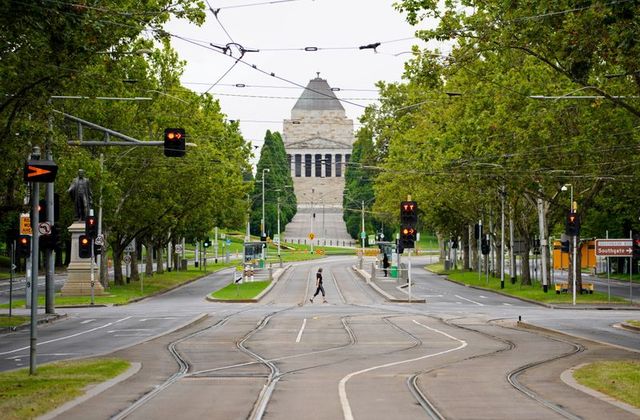Melbournian’s 200 days of dystopian lockdown
Melbournians woke up to their 200th day under lockdown on the 19th of August, 2021. This also marks the start of the third week of the extended sixth lockdown. And what kind of a world is it?
If a Melbournian took a walk within their allotted 5
km radial confinement, within his allowance of daily exercise time, and within
the limits of curfew hours, they might see striped tapes wound like spider webs
around swings and slides, brazenly denying children access to playgrounds,
deemed too contagious by the authorities. This despite government
figures, multiple
studies, and systematic
reviews all showing that the chance of outdoor
transmission is virtually nil.
They might walk by empty and quiet schools on a week
day, with no sounds of laughter, no high jinx, and no bells announcing recess
or class. While children like Malala Yousafzai are willing to risk being shot
in the head for some education, the Victorian government has deemed education
in schools too risky for our children. This is in spite of CDC
data showing that while making up 22.3 percent of the
population of the US, children (under 18 years) make up only 0.1 percent of
deaths associated with COVID-19. In the UK, with a population well over double
that of Australia, data
show that in the first year of the pandemic, 25
children (under 18 years) died of SARS-CoV-2, out of whom 18 died as a direct
result of the virus, and of the 25, 19 had preexisting chronic health conditions.
Compared to this, in the state of Victoria, where Melbourne
is the capital, Victorian Coroner’s Court data show that eight
girls under the age of 18 have died by suicide between
January and July in 2021, versus just one such death in 2020. The Victorian
Agency for Health Information reports show that
the number of teenagers hospitalized for self-harm or suicidal thoughts have
ballooned by 51 percent this year, with a weekly average of 148 cases, compared
to 98 cases in 2020.
Is anyone surprised that a mental
health pandemic is blossoming in
young Melbournians under such an extended,
unpredictable and draconian response to a virus that is now shown to be only
as deadly as the seasonal flu for youths? What scars
this might leave for the rest of their lives are hardly brought up, let along
discussed.
The strolling boulevardier might see half-finished
houses, standing mute and idle; local shops and restaurants closed
or shutdown. The vast majority of Melbourne’s
300,000 strong construction workers live within lockdown areas and are unable
to work. It is also neigh on impossible for many businesses to keep head above
water through a time during which seven out of the last 16 months were in
sporadic and abrupt lockdowns.
In stark contrast, the opening of the UK has spurred
on economic
growth not seen for almost a century. In the second
quarter of 2021, the UK economy grew at more than double
the rate of the EU, and tripling that of the US. Simultaneously,
cases
have been falling steadily in the UK, surprising
many experts. Similarly, in Sweden, 7-day average death numbers have been zero
for over two weeks, a-month-and-a-half after they abandoned all mask recommendations.
The Swedish economy has also surpassed
its pre-pandemic size. A reasonable person might think
that this is evidence that lockdowns do no good whatsoever.
The pedestrian, hastily adjusting his mask, may chance
upon policemen pepper
spraying young girls in the face for not wearing a mask. He
might see friends exchanging everyday greetings furtively on street corners,
alert as nervous herbivores, in case they are reported by nosey and
self-righteous neighbours, encouraged by the government, for illegally
gathering.
After his walk, he might return home, unmask, turn on
the television, and see the authorities telling him that all this is for his
own good.



Comments
Post a Comment